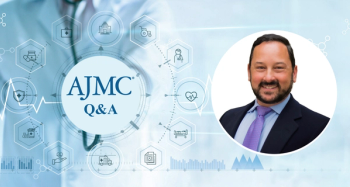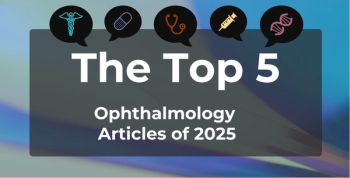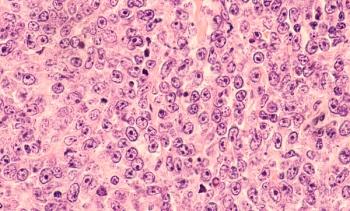
PrEP for HIV Prevention: Essential for Ending the Epidemic, but Out of Reach for Many
Despite pre-exposure prophylaxis (PrEP) being crucial for preventing new HIV infections and working toward an end to the epidemic, the treatment is still out of reach for many.
As public health officials from all corners of the globe try to get a hold of, and end, the HIV epidemic, many are recognizing the importance of not only treating existing diagnoses, but also
Marketed as Truvada, Gilead’s PrEP gained FDA approval for HIV prevention in 2012. Since its approval, usage among people in the United States
“This is truly the first medical intervention we’ve had to prevent HIV in the entire history of the epidemic,” said Michael Kharfen, senior deputy director, HIV/AIDS, Hepatitis, STD, and TB Administration, Washington, DC, health department. “We’ve had other tools to prevent HIV acquisition or transmission, such as condoms or clean needles for those using drugs, but we’ve never had an opportunity like this.”
However, despite PrEP being essential for preventing new infections and working toward an end to the epidemic, the treatment is still out of reach for many. Just 5 states account for nearly 50% of PrEP users: New York, California, Florida, Texas, and Illinois. While the south accounted for more than half (52%) of all new HIV diagnoses in 2016, it accounted for just 30% of all PrEP users.
In addition to geographic disparities, there are also demographic ones. According to a CDC analysis of 2015 US data, 44% of African Americans and 25% of Latinos could have potentially benefited from PrEP. However, just 1% of that African American population and 3% of that Latino population were prescribed PrEP.
An overwhelming majority (93%) of PrEP users in 2016 were men. In an effort to address the significant gender disparity, state health departments have been implementing outreach and education efforts. Washington, DC’s, health department has been incorporating PrEP education into broader health services, such as family planning and reproductive health.
In June,
However, getting the word out about PrEP and increasing awareness has proven to be just one hurdle; high cost-sharing and out-of-pocket (OOP) costs provide another. Six years following its approval, the treatment comes with a monthly $1600 price tag. While insurance typically covers the treatment, those uninsured or underinsured are left with a hefty bill.
“When we think about the price of the pill being as expensive as it is, if you were to get an HIV diagnosis and a doctor said here’s a pill that will keep you from dying, you’re probably going to be more willing to pay for a pill that will stop you from dying than to pay for a pill that will prevent you from getting the disease,” explained Joey Mattingly, PharmD, MBA, assistant professor, University of Maryland School of Pharmacy. “And that’s a problem. We have to continue educating people on their risk.”
To fill the financial gaps for the uninsured or underinsured, Gilead has implemented assistance programs to help mitigate costs. However, patients are not always aware of these assistance programs, said Mattingly. When they head to the pharmacy counter and see the price of the treatment, they might not know these programs are available to them, and the pharmacist helping them might not either.
And while these programs have been critical in expanding access for those using them, they sometimes present consumers with barriers, most recently with copay accumulator policies, which affects those who use copay cards, explained Amy Killelea, JD, director, health systems integration, National Alliance of State and Territorial AIDS Directors (NASTAD). Under these policies, which are not highly publicized, when a consumer uses their card, it does not go toward their deductible or OOP maximum.
Because many consumers are not aware of the policy when they sign up for their plan, and because the copay card maxes out at $4800 annually, “this means people are finding out that their plan or pharmacy benefit manager implemented this midyear when they go to pick up their PrEP prescription and they’re hit with a $1600 bill because they’ve been using their copay card, which hasn’t been doing anything to help them meet their deductible,” said Killelea.
In an effort to clear some of these hurdles, starting September 1, Gilead will increase its annual benefit for Truvada to $7200, up from the orignal $4800. Starting this month, those who qualify for the Medication Assistance Program are eligible for 12 months, rather than 6 months.
"At Gilead, we are committed to ensuring that people at risk of HIV have access to Truvada for PrEP tablets," said a Gilead spokesperson in an email exchange with The American Journal of Managed Care®. "We support comprehensive payer coverage and maintain the Gilead Advancing Access program for qualified underinsured and uninsured people in the US who cannot afford their medications. This includes our Truvada for PrEP co-pay assistance program for commercially insured individuals and the Medication Assistance Program, which provides free medication for those who qualify based on financial need."
In order to help consumers navigate the muddy waters of paying for PrEP, advocacy groups have implemented their own programs to overcome some of the barriers. “NATSAD has been finding different ways that health departments and providers in their jurisdictions can utilize varying financing mechanisms and partnerships,” said Killelea.
Another major part of the effort has been insurance access—ensuring people know if they’re eligible for Medicaid or if they’re eligible for subsidized insurance through the marketplace, she explained.
A growing number of state health departments have also launched PrEP drug assistance programs through state funding to offer PrEP for those who otherwise don’t have access.
In May,
For these patients, as well as those with private insurance that won’t cover the pill, the uninsured, and those who can’t access patient assistance programs, Washington, DC’s, health department steps in and provides Truvada starter packs for free, said Kharfen.
“We will do same day start-ups of PrEP. We’ll give people the medication then, because when they say they’re ready now, we don’t want them to be told that they have to wait,” he explained. “Our approach has been: if someone is at that moment and they’ve made that decision, we want to be able to affirm that decision right then and there.”
Over the past 3 years, the department has spent close to a million dollars on the treatment. However, with Washington, DC’s, ambitious goal of having 8000 people on PrEP at any 1 year by 2020, and no available generics, there is a question of whether providing free PrEP for those who need it will be sustainable.
Kharfen also cited a lack of understanding surrounding PrEP among managed care plans, such as awareness that PrEP has dual indications for both the treatment and prevention of HIV. “We still get plans saying, ‘Well, this medication is used for treatment,’ and therefore they won’t necessarily give coverage,” he explained.
“Managed care plans should see the benefit associated with this,” said Kharfen. “When we’re talking about lifetime HIV treatment costs [between] $375,000 and $400,000, PrEP is much more affordable than that, so there’s a financial incentive to cover PrEP.”
Newsletter
Stay ahead of policy, cost, and value—subscribe to AJMC for expert insights at the intersection of clinical care and health economics.








